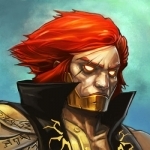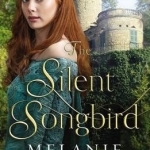Sophia (Bookwyrming Thoughts) (530 KP) rated Avalon Rising (Metal & Lace, #2) in Books
Jan 23, 2020
Compared to <i><a href="https://bookwyrmingthoughts.com/arc-review-camelot-burning-by-kathryn-rose/"; target="_blank" rel="noopener">Camelot Burning</a>,</i> the sequel definitely surpassed most, if not all, of my expectations.
I found <i>Avalon Rising</i> to be a lot more enjoyable than its predecessor. There aren't as many technical terms this time around, as Vivienne seems to be more focused on the mission the Lady of the Lake left for her near the end of the first book and helping Camelot's remaining refugees rebuild after the war with Morgan Le Fay. Soon, Vivienne finds out that some of the knights, including her brother and Marcus, have been missing for several weeks on their quest to find the Holy Grail and Avalon. She also finds out that Jerusalem, where the alchemist Azur resides, is attacked by the Black Knight and his men. Wanting to offer her help, Vivienne decides to leave earlier than what the Lady of the Lake originally planned, finding out that in doing so, she may have placed Marcus's life in danger.
The second <i>Metal & Lace</i> novel is a lot more adventurous than the first one - Vivienne teams up with the castle blacksmith to find the missing knights, which is eventually intercepted by Merlin (who tends to be more of an obstacle this time around rather than actually helping Vivienne). They are then sent to free the Fisher King in the Perilous Lands, which actually results in several fantastic tests/trials for Vivienne to try and prove her worth to free the Fisher King and reveal the coordinates to Avalon. The trials that Vivienne goes through in <i>Avalon Rising</i> to find the knights and to reveal Avalon's coordinates almost felt like a female version of Percy Jackson in a medieval-esque world.
Vivienne also underwent a few changes as a character. She seems more temperamental, but is definitely extremely determined to accomplish what she wants to accomplish. A fantastic quality in a heroine, since Vivienne probably would have spent her time running away from pursuers who also want the coordinates to Avalon rather than doing something extremely interesting (like trying to resist using magic despite the pull).
<i>Avalon Rising</i> was a fantastic companion to <i>Camelot Burning</i> - I definitely look forward to reading the next book with the major cliffhanger Kathryn Rose leaves us with. Might I ask to review-nap this until the next book come out?
<a href="https://bookwyrmingthoughts.com/arc-review-avalon-rising-by-kathryn-rose/"; target="_blank">This review was originally posted on Bookwyrming Thoughts</a>

Kid Chameleon Classic
Games and Stickers
App
Enter Kid Chameleon and experience SEGA's colossal platformer! Unleash your super powers in...

Lonely Planet Chateaux of the Loire Valley Road Trips
Lonely Planet, Alexis Averbuck, Oliver Berry and Jean-Bernard Carillet
Book
Lonely Planet: The world's leading travel guide publisher Discover the freedom of open roads with...
BookInspector (124 KP) rated The Spaces In Between in Books
Sep 24, 2020
The main star of this book is Nicholas for sure. It is his story which makes the jaw drop. Lack of money and job forces him to work in this creepy house as an English tutor, but this house has strange residents, who live like it is 1916ies Russia. I really liked the complexity of all the residents in that house, they all were very amusing and unique personalities. They all have a role to play, and it is hard to distinguish whether they want to help or to harm Nicholas. The main character brought out many different emotions in me, I felt pity for the events he had to suffer, I was happy when good things happened to him and I was angry when he took silly decisions.
The whole story was told from two different perspectives. We have the introduction and investigative part told by a psychologist Dr Marie – Claire Groller, and the main story written down by Nicholas. I found both of the stories absolutely fascinating. The events highlighted in the blurb, which Nicholas had to suffer, are absolutely unimaginable, and the whole story is very dark, atmospheric, twisted and unbelievable. There is so much detail and emotions in his story, it is just creepy. I really enjoyed the investigation done by Dr Marie Clare and her father. I really liked all the information which they were able to find out, but I do miss the proper conclusion to this story. I WANT JUSTICE! 😀
I really enjoyed the structure of this book, I think it gave this book a great element of surprise. This book was easy to read, except for the French parts. I know maybe three words in French, so all the sentences without a translation left me a little annoyed. I really liked the decent length of the chapters and I loved the mask picture on the pages throughout the book. It gave this good feeling, that I am reading something written in medieval times. 🙂 So, to conclude, I strongly recommend reading this book, filled with unusual, eccentric characters and very unique and sinister setting, where reality mixes with fiction and imagination. What is real and what is an illusion? That’s the question. Enjoy 😀
Kara Skinner (332 KP) rated Lady Danger in Books
Jun 12, 2019
Page Count: 368 pages
Average Goodreads Rating: 3.88/5 stars
My rating: 3.5/5 stars
When the Norman king gives Pagan the Rivenloch keep and a daughter of the current laird for a wife, he knows it’s too good to be true. Not only is Rivenloch’s laird suffering from dementia, but the two oldest daughters are not content to take on house-making duties like most women. Instead they are skilled fighters who command Rivenloch’s army. It isn’t long before Pagan realizes why the king chose him for Rivenloch. Only the strongest, most hardened men could conquer the Warrior Maids of Rivenloch.
Deidre isn’t about to give up her power to some Norman, even if he is supposed to be their ally. She’ll marry him to spare her sisters, but that doesn’t mean she’ll make it easy for him. She’ll conquer the Norman before he realizes it.
This book took awhile to get good, but I have to admit, both Pagan and Deidre have very realistic reactions and feelings considering the situation. Pagan comes from a very misogynistic society, so female warriors are unnatural to him. And Deidre sees Pagan as another enemy invading her territory and taking control. But their irrationality them makes them unlikeable at times.
I liked them, then I didn’t. Then I liked them again. Pagan’s devout honor and chivalry is admirable. Although he thinks in terms like “taming” and “conquering” Deidre, he would never actually force her or hurt her in any way. Nor does he want women to fear him. Seeing Miriel, the youngest sister, scared of him made him feel sick. Despite his flawed yet historically accurate upbringing, he does see the value in Deidre and Helena knowing how to fight after learning about the dangers they faced. But there’s so much misogyny in him. He actually thought Deidre would prefer having a man protect her than protecting herself, and he forbid her from sparring.
Of course, Deidre resents all the changes Pagan makes to Rivenloch, even though they were changes that desperately needed to be made. She also has deeply misguided views about sex and men. She planned to control Pagan through his lust by withholding sex, even denying her own desires. During this time, she considered him beating her and forcing her, but the idea that he would commit adultery never occurred to her, even though she repeatedly told him that she would never want him. However, I did enjoy watching Pagan’s massive ego get checked.
They drove me crazy, even though their emotions were realistic. However, after they put their absurdities aside and started working together, the story immediately improved. I loved them working in harmony and the fight scenes at the end were fantastic. Lady Danger is lame at first, but is worth the wait. Medieval romance fans will enjoy this book.
Cynthia Armistead (17 KP) rated More Holmes for the Holidays in Books
Mar 1, 2018
"The Christmas Gift" by Anne Perry is a nice little piece about a stolen Stradivarius and a couple who want to marry against the wishes of the young lady's father. There is an excellent red herring, one of the few in this anthology.
In "The Four Wise Men" by Peter Lovesey, Watson must answer a call to duty from his former commanding officer in the Army, in order to help guard a medieval treasure in a Christmas pageant. The game is soon afoot, and Sherlock's powers of observation are as keen as ever.
Barbara Paul's "Eleemosynary, My Dear Watson" gives Holmes a jewel theft and a kidnapping to solve, which he does in his inimitable way. One clue seemed slightly too obvious to me, but it may not to other readers.
In "The Adventure of the Greatest Gift" by Loren D. Estleman, Holmes receives a wax cylinder containing a recording of a song popular in America. He takes it as a warning of a crime which could lead to war between Britain and France, and of course he leaps into action. This is Mycroft Holmes' only appearance in the volume.
There's plenty of misdirection in "The Case of the Rajah's Emerald" by Carolyn Wheat. Somehow, though, I suspected one of the great revelations in this one from the beginning, but I couldn't tell you exactly why. It didn't ruin the story for me, and there was still a surprise at the end.
On the other hand, Edward D. Hoch's "The Christmas Conspiracy" managed to take me completely unawares. I couldn't fathom why the crime would be committed or by whom, despite having a major clue dropped by one character. Very well done!
"The Music of Christmas" by L.B. Greenwood telegraphed the identity of the criminal from the start, but was well worth reading. One of the characters also tugged at the heartstrings.
Bill Crider's "The Adventure of the Christmas Bear" is largely memorable because of the appearance of Oscar Wilde as a character.
"The Adventure of the Naturalist's Stock Pin" by Jon L. Breen gives us Charles Darwin as Holmes' client. The mystery is less Sherlockian than some of the others, but I didn't mind reading it.
Daniel Stashower's "The Adventure of the Second Violet" was an interesting twist on a well-known Christmas story. I cannot say more without spoiling it, but he has a nice touch.
"The Human Mystery" by Tanith Lee is as dark as I expect from her, and was a depressing ending to the collection. It was, however, very well-written.
The anthology left me hungry for more Holmes, and wishing that I weren't between seasons of BBC's Sherlock or that I had another collection of stories on hand. That's the sign of a success, I think.
BookwormMama14 (18 KP) rated The Silent Songbird in Books
Jan 2, 2019
Eva longs to be free...Free of the restraints that have been cast upon her by her status. Even if it means to work hard as a servant for the rest of her life. When King Richard decrees that she marry Lord Shiveley, Evangeline decides that she must run away or face a life of fear and abuse. In order to avoid detection, she pretends she is mute. But when her secret is revealed will those she has come to care for be able to forgive her? When Westley's life is in danger, yet Eva is the only witness...Will they heed her word? Or has the seed of mistrust been buried too deep?
Throughout her life Evangeline's voice has brought comfort and pleasure to herself and those around her. But she must stifle that gift in order to hide her identity. Throughout the story we see Westley encourage and draw out the voice, her true identity, that she has hidden. He is so gentle and sweet with her. Evangeline eventually learns that faith and trust in God is the strength she must lean on.
My only knowledge of The Little Mermaid is the animated Disney version. But as you compare the stories, there are several parallel characters. I think what I love most about Melanie Dickerson is that she takes the classic childhood fairy tales and creates a world, a story, that is realistic, yet still so full of "magic". There is also the added element of faith that adds a whole new dimension to the story. Set in medieval England, the way of life was much different then. But I so enjoy immersing myself into the time period and Melanie Dickerson's books. To be swept away by the adventure and live alongside the people of Glynval.
There are a few twists in the storyline that prove to be heartbreaking, exciting, and romantic. A quick read, The Silent Songbird will keep you turning the pages until you are finished. Even though this is a part of the Hagenheim Series. I did not recognize any of the characters (I have only read The Golden Braid and The Silent Songbird so far). You can read this book by itself and not have any confusion. This story is for "Young Adults" (I am still young right?), but is also great for adults. I am so thankful to Melanie for writing stories that are clean and faith filled for our teenagers.
I received a free copy of The Silent Songbird. I was not required to write a review and this does not influence my review, positive or otherwise. All opinions expressed are mine alone.

Clash of Kings - CoK
Games and Entertainment
App
Battle against rival clans, strike down enemies with real time strategy and build an empire in CoK,...

Bladelords - fighting revolution
Games and Entertainment
App
Reveal your inner fighter in this 3D fighting game! Play up to 16 fighters and upgrade their...

Crowntakers - The Ultimate Strategy RPG
Games
App
Dark times are imminent: the king’s abduction throws a once peaceful land into turmoil. Being the...



